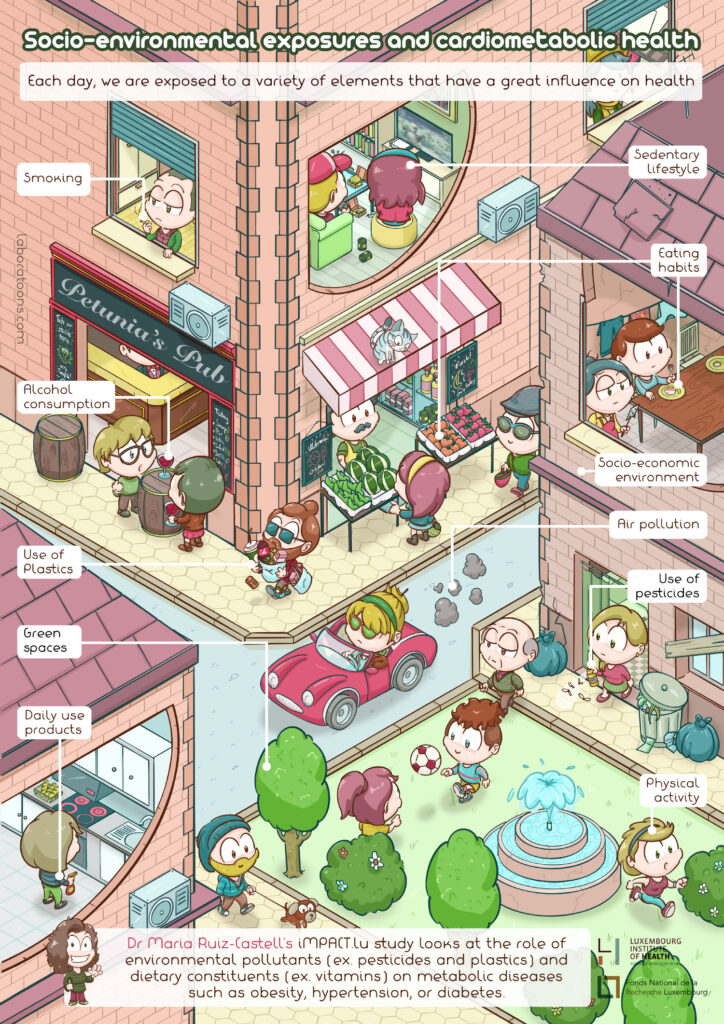News
Unlocking the Exposome: Exploring Our Environmental Exposure

Using hair analysis, LIH researchers find that small, seemingly insignificant exposures add up to create a unique fingerprint that affects an individual’s risk for diseases like cancer, heart disease, and more.
We all know about the genome, but what is the exposome? The exposome encompasses the environmental exposures (chemical, lifestyle, psychosocial, and physical factors) that individuals face throughout their lives, and when combined with the genome, can contribute to chronic diseases. For example, there are over 350,000 chemical entities used in Europe and the vast majority of their long-term health effects are unknown. While previous studies have focused mainly on the health risks of single chemicals, recently researchers are starting to look at multiple chemical and non-chemical environmental exposures in order to better understand the complexity of the exposome. The comic shown here illustrates the various types of exposures that can affect one’s health.
A recent study led by Dr. Maria Ruiz-Castell in collaboration with Dr. Brice Appenzeller of the Dept. of Precision Health at the LIH characterized the adult exposome of the general population of Luxembourg. The study measured 175 environmental exposures in the general Luxembourg adult population, including a detailed list of chemical pollutants detectable in hair. The results showed correlations and patterns of exposures between and within specific groups (socio-economic status, age, gender, nationality, etc.), with higher correlations within groups than between groups of exposures. One concerning result of the study is that the team detected pesticides banned in the EU in many samples, showing the extreme longevity of some harmful chemicals. The study also observed differences in exposure variables between men and women, with chemical concentration of pollutants, especially pesticides and herbicides, mostly higher in men and higher concentration of micronutrients and lower alcohol consumption in women. Some exposures were moderately correlated to each other, with higher median correlations within exposure groups. Some correlations between different variables were to be expected based on lifestyle habits, such as exposure to anti-tick chemicals when one owns pets.
The adult exposome is complex and multidimensional with many components, which means that reducing environmental exposure to a few exposure components may only provide limited benefits. This complete overview will help to better interpret the role that the exposome plays on health
said Dr. Ruiz-Castell, leader of the study.
“Our results show that hair analysis is a great method for assessing chronic exposure to a variety of chemicals and pollutants and we strongly encourage the use of hair analysis for the exposome in future studies,” said Dr. Appenzeller, co-author of the study.
The study was published in the Environment International journal and can be found online here.
Funding and collaborations
This research was funded by the National Research Fund of Luxembourg (C17/BM/11653863/ iMPACT.lu to MRC), the Directorate and Ministry of Health, and the Ministry of Higher Education and Research (MESR). The study is also part of the FNR-funded CORE project “Micronutrients, Pollutants and Cardiometabolic Health in Luxembourg” (IMPACT.lu).







